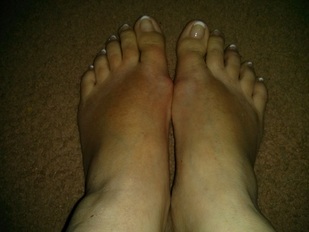Reflex Sympathetic Dystrophy (RSD) can develop following trauma to a region of the body. Typical situations would be a severe ankle sprain, shoulder dislocation or fractured bone. It can also occur with a stretch injury of a peripheral nerve. RSD is also known as Complex Regional Pain Syndrome I (CRPS I). Symptoms of RSD include …
a) motor impairment: weakness and dystonia
b) sensory abnormalities: burning pain (dysesthesia), hypersensitivity to touch (allodynia)
c) autonomic deregulation
i) vasomotor: swelling (edema), discoloration (erythema, pale), temperature (warm, cold)
ii) sudomotor: sweaty or dry (hyper/hypohydrosis)
d) trophic changes: thinning of skin, loss of hair, nails turn brittle
This is one of the reasons that clinicians try to control the pain early following a trauma so that the patient can maintain a normal level of physical activity and hopefully avoid unnecessary long-term complications such as RSD.

 RSS Feed
RSS Feed
